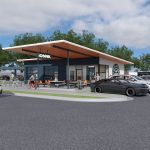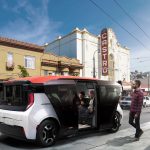General Motors announced plans to partner with ChargePoint to install 500 new ultra-fast charging points. The new ports will be set up at various locations across the U.S. by the end of next year.
The goal is to improve access to chargers equipped with the latest innovations in EV charging. Some of the 500 ports will be capable of charging speeds up to 500kW, which is faster than most electric vehicles can currently handle. Neither GM nor ChargePoint revealed how many will hit those metrics.
“Continuing to provide customers with better charging options helps to remove barriers to EV adoption and improve the ownership experience,” said Wade Sheffer, GM Energy vice president.
“Today, GM drivers have access to hundreds of thousands of places to charge and we are proud that this collaboration with ChargePoint adds even more reliable, accessible, and convenient charging experiences. With ultra-fast charging, Omni Port technology, and excellent customer experiences, this collaboration should be another reason why EV drivers and the EV-curious should be excited.”
What’s coming

Electric vehicles are getting more popular and that will require hundreds of thousands more charger plugs across the country.
ChargePoint’s Omni Port system, which allows vehicles with CCS or NACS charging ports to use any charger, will account for many of these new charging ports. The benefit of these ports is that they can be used without the need to carry an adapter or dedicate a parking space to a particular connector type, ChargePoint officials said.
“The transition to electric mobility continues to be driven by leaders such as General Motors offering innovative EVs and committing to make chargers as ubiquitous as possible,” said Rick Wilmer, CEO of ChargePoint.
“Our collaboration with GM represents a significant investment in the infrastructure to enable fast and easy charging for all. Together, ChargePoint and GM will deliver a seamless fast charging experience via reliable charging hardware managed by our industry leading software platform.”
Starting in 2025, all GM EVs will use the Tesla-based NACS charging outlet, but a converter to use CCS is available.
More EV News
- Sony-Honda Mobility Set to Reveal Near-Production Afeela EV at CES
- Consumer Reports: EVs Have More Problems Than ICE Models – But Gap is Closing
- As sales Slow, Tesla Pauses Cybertruck Production
Growing influence
Many of the chargers will be branded as “GM Energy” ports. The automaker’s been working to not only produce leading edge electric vehicles but making sure there are places to charge them. GM currently has 134,000 chargers that are accessible through its own Ultium Charge 360 program and mobile app.

The growth of EV chargers across the U.S. In fact, you can even charge in Gothenburg, Nebraska with these Tesla Superchargers.
To further accelerate the acceptance of these new DC fast chargers, GM and ChargePoint are offering incentives to third-party charge point operators willing to install the new charging ports.
General Motors and EVgo teamed up several years ago and now have 390 locations with 2,000 fast chargers installed.
GM is also one of seven automakers who, in July 2023 announced the formation of an ambitious new charging network, Ionna. The group also debuted with Mercedes, Hyundai, Kia, BMW, Honda and Stellantis as partners, though Toyota signed on this past summer. The partnership received regulatory approval in July and is in the process of installing the first of a planned 30,000 public chargers.
Need for chargers
By comparison, Tesla today runs one of the biggest networks, with 2,475 Supercharger stations with 28,625 quick-charge plugs. Its 4,433 Destination locations offer 14,310 slower Level 2 charge ports.
Over the past year, Tesla has inked agreements with virtually every other automaker allowing their customers access to the Supercharger and Destination chargers. And the industry is in the process of switching — in the U.S. — to Tesla’s unique NACS port, abandoning the CCS and CHAdeMO standards.
Federal data show there now are 69,004 public charging stations across the U.S., with 193,583 charging ports in operation as of the beginning of December. About 9% of those, or roughly 14,000, are DC fast chargers according to the U.S. Department of Energy.
Depending upon their power levels and the specific vehicle, they can yield up to an 80% battery boost in 15 to 30 minutes. The percent of quick chargers has been on the rise, reflecting the need for travelers to get a fast boost while on the road.
The number of charging ports – think of them as the electric equivalent of gas nozzles – has risen by nearly 11,000 over the last half year. And a variety of factors are contributing to the rapid roll-out. That includes the Biden administration’s move to distribute about $6 billion in funds allocated under the Inflation Reduction Act.









Sounds like a joke.
Tesla has 28,000 charge ports in the USA. GM’s 500 is less than a drop in a bucket.
Bill,
That’s just one of the charging projects GM is involved in. They’re involved in the much bigger Ionna venture, among other things. And the important thing is getting the charging network fleshed out, whomever is doing it. I was impressed seeing about 10 Tesla Superchargers across the street from a hotel in the middle of nowhere Nebraska. Add them all up and it’s becoming easier and easier to travel in an EV.
Paul E.